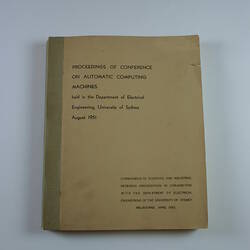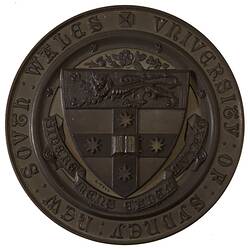The University of Sydney was established in 1850 to promote useful knowledge and to encourage the residents of New South Wales to pursue education. It first began operating in buildings now occupied by Sydney Grammar School. Teaching began in 1852 with a Faculty of Arts degree, which required three years' study of Greek, Latin, Maths and Science.
The University's early growth was hampered in several ways. Secondary education was undeveloped in the colony, and the program provided did not encourage further study. It took 30 years for the annual enrolment at the University to reach 100. Income from tuition fees was inadequate, and Government grants did not properly compensate. Nevertheless, in 1855 the Government gave the University land at Grose Farm, about three kilometres from the city. The first plans for the University's original building, the Quadrangle, were drawn up by architect Edmund Blacket. By 1862 the Great Tower, now a focal point of the University, had been completed.
Planning and building of the Gothic Revival Quadrangle continued over a number of years. The south-western corner was designed by Government Architect Walter Liberty Vernon and completed in 1909. The University's own Professor of Architecture, Leslie Wilkinson, designed the northern and western wings, finally added in the 1920s, along with the Zoology and Physics buildings and the Edward Ford Building.
In 1880 the Government increased its grant, stimulated into action by the news of the very large Challis bequest to the University. In 1889 it provided finance for a Medical School Building. The Challis bequest stimulated the development of the University. Between 1880 and 1891, ten new professorships were established. The Faculties of Law and Medicine were at last able to recruit staff, and a Faculty of Science, incorporating a School of Engineering, was created. Research flourished. A much greater range of choice and the possibility of considerable specialisation were provided in the Arts Faculty, and, from 1890, it became possible to enrol for degrees in Medicine, Law, and Science without first doing at least one year of Arts.
The Thomas Fisher Bequest of 1884 provided further incentive for the State to fund a library building (opened in 1910) in the south-west corner of what is now the Quadrangle. Later gifts provided further vital support to the University. The University also arranged for practising doctors in hospitals to provide clinical instruction for medical students, and located the Law and Dental Schools in the city, with practitioners doing much of the teaching.
The University Rifle Corps was formed in 1900, and members of the Military Board of the Commonwealth were appointed to the University's Board of Military Studies. In 1907 a Diploma in Military History and Science was created. During World War I the University was requested by the Department of Defence to accelerate courses, and to release staff for intelligence work, the testing and preparation for the manufacture of war materials, and for scientific advice on tunneling in France. Some 1800 members of the University were engaged in active service, of whom 197 were killed.
In 1920, new faculties were created for Dentistry, Engineering, Architecture, Agriculture, Veterinary Science and Economics.
During World War II over 4000 members of the University community served in the military forces, of whom 250 were killed. A plaque in the Tower archway commemorates their service. From the ranks of the pre-war University regiment came four major-generals, six brigadiers and an air commodore, and one, later Governor of the State, was awarded the Victoria Cross. Several University departments were engaged in war work: on medical needs, on camouflage work, on research for optical munitions and radio locations, and on a range of war-time engineering problems.
After the war, the Federal Government provided financial support for war veterans wishing to enrol in universities, and funds for universities to expand their facilities. By 1987, enrolments were five times greater than in 1944. The University was extended with the addition of several buildings.
The University is self-governing, with a Senate comprising graduates, staff, students, and State Government appointees. It is legally responsible to the State, but receives its financial support from the Federal Government.
References:
University of Sydney website http://www.usyd.edu.au/about/profile/pub/history.shtml
More Information
-
Keywords
-
Localities
-
Authors
-
Article types







